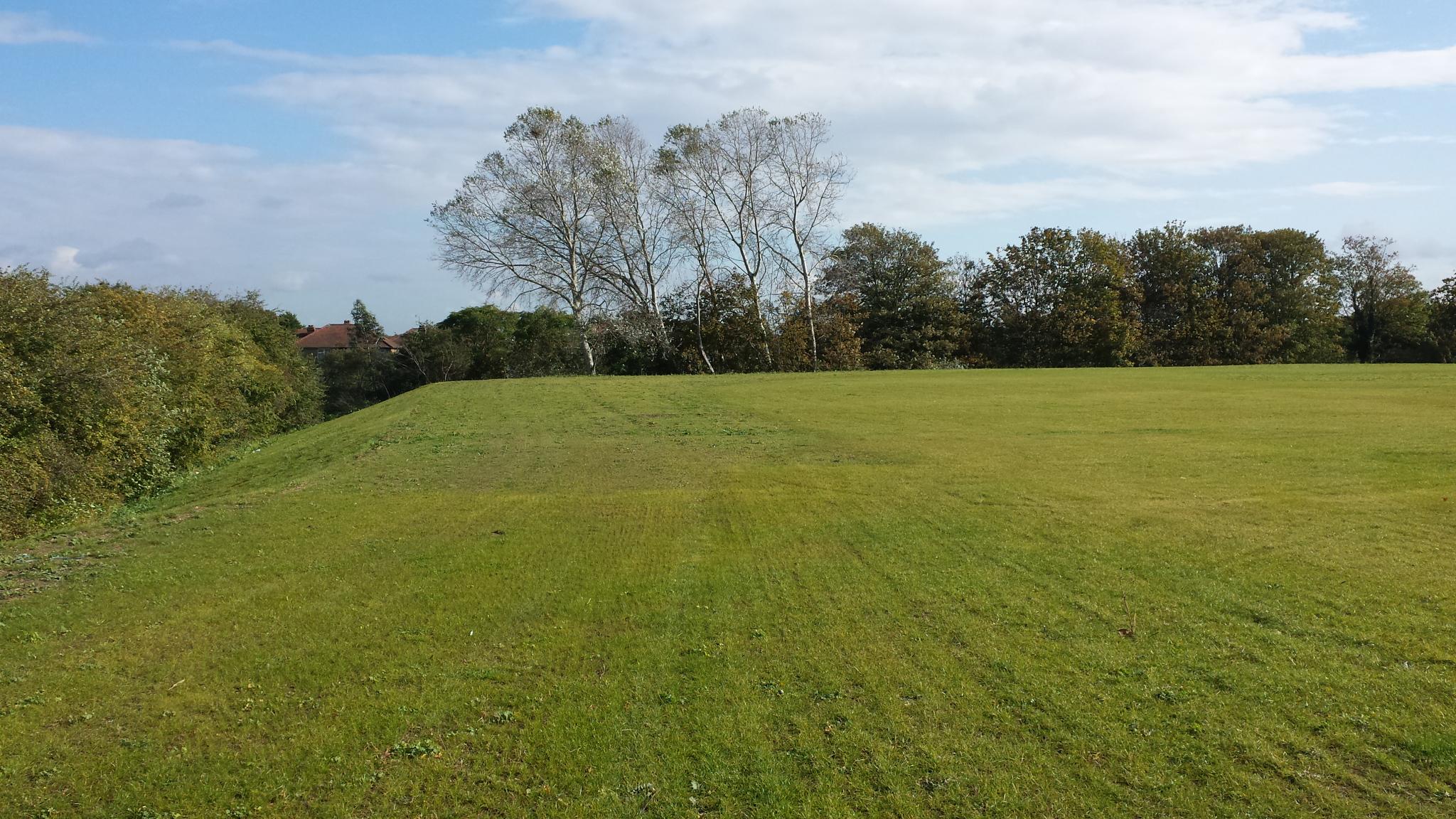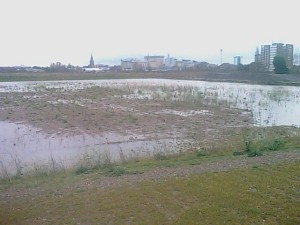Feltham Arenas was a former sports ground and football club, where Mo Farrah made his first steps to Olympic glory. The site had fallen into disrepair and an existing football stadium and associated buildings had been demolished and then covered over with tipped material. The site was then used as a fly tipping location for several years. The surface of the four hectare site was littered with broken glass, builders rubble, concrete and reinforcing bar.
The site had been reviewed by consultants who had identified an area of Japanese Knotweed. The banks around the area were potentially unstable at their existing gradient. They recommended that the banks around the site were re-profiled to a 1 in 3 gradient.
Originally, PGSD was asked to import topsoil to 150mm deep. However, we suggested that we would screen the existing soil on site and ameliorate it for reuse. This was done using two large trommell screeners. This resulted in a reduction in both price and vehicle movements.
The existing surface of the area and banks was cleared of vegetation, including the Japanese Knotweed.
The surface material and the excavations on the bank were then processed in the screeners. The rubble from the screening was buried in lines to improve the drainage on the site. The soil was then spread over the site, ready for seeding.
Two types of seed were used: amenity grass seed for the impromptu football pitches and a heathland wild grass mix for the remaining areas. The amenity areas were fertilized, as an analysis of the soil showed that it was nutrient poor.
Technical details
* Site set up including 92 Heras panels.
* Welfare facilities including site office and 24 hour security.
* Bank and slope re-profiling. All spoil removed from slopes and evenly distributed over the remainder of the site.
* Grading and leveling of the surface. Finished level included a centre camber, to aid water run off.
* Cultivation and removal of deleterious materials i.e. stone burying – ensuring all stones over 40mm were buried and not visible on the surface.
* Supply and sow 5500sq.m grass seed BSH RE11 perennial wild flower mix at 2 – 5 grams per square metre.
* Treatment of Japanese Knotweed. Treatment with translocated herbicide, stem injection, excavation and wrapping.
* Asbestos monitoring and removal.
* Site maintained for a period of 12 months from project completion, with grass being mown to amenity standard.
The site has been returned to public use and local residents are able to use the area. PGSD achieved a reduction in price and vehicle movements through screening and amelioration of the top soil.









